On October 4, 2012, a “new” company designation was introduced in the Philadelphia Fire Department. This was done to differentiate the special capabilities of Engine 38’s new apparatus. That day, a 2012 KME pumper equipped with a 50-foot Snozzle was placed in service. The radio designation of the company was now Water Tower 38. On January 4, 2013 Engine 57 became a Water Tower when they were assigned a new piece with the same capabilities as Water Tower 38. What many people don’t know is the Water Tower designation harkens back to an earlier time in the history of the Philadelphia Fire Department.
Philadelphia’s firefighters had been challenged for years to effectively fight fires in multistory buildings when an exterior attack was warranted due to heavy fire conditions. Hose lines operating in the street were unable to penetrate far enough into the fire building to have an effect. The department did experiment with early ladders pipes, but they were not a success due to the wooden aerial ladders not being sturdy enough to withstand the back pressure. In 1894, a solution for the problem was found when a water tower was purchased from Hale. It was outfitted with a mast that could be raised to a maximum height of 55 feet. The tower utilized a large soda/acid tank to help raise the mast. Agitating the soda/acid solution in the tank produced carbon dioxide gas which was used to help raise the mast from its bedded position. A nozzle attached atop the mast, with a discharge capacity of 1,000 GPM, could be moved both horizontally and vertically to sweep the fire floor with water. The apparatus was also equipped with two high-pressure deck guns. The Water Tower was stationed with Engine 43 and Truck I at 2110-12 Market Street.
At 10:25 AM on Friday, October 25, 1901 the Water Tower responded to Box 393, 13th and Market Streets for a fire at the Hunt, Wilkinson, and Company Dry Goods store at 1219-21 Market Street. As the members were preparing the tower for service, the intense heat from the blazing structure burned the hose in the street and heavily damaged the tower. Hoseman Lauber and Driver Lancaster both received burns to their faces and hands. Both were treated at Hahnemann Hospital for their injuries. Twenty-two civilians perished in the five alarm inferno. A total of seventeen department members were injured. In the aftermath of this tragedy, the tower was returned to the manufacturer for repairs. Part of the rebuilding included the installation of a sixty-five foot mast.
Water Tower 2 was placed in service on April 16, 1912. They were housed in a new station at 2732 N. 6th Street. The company was assigned a 1910 American LaFrance 65 foot tower that was powered by a 1912 Webb/Couple Gear gasoline/electric tractor. This tower utilized a spring hoist to raise the mast. (For more details on this see the July 24 post on the PFD’s electric apparatus.) The apparatus was purchased in 1910 in anticipation of the high pressure system in the Mill District being completed. A court challenge to the bond issue used to finance the system delayed it for nearly two years. While the case wound its way through the courts, the tower was placed in storage.
Over the course of their service with the Bureau of Fire, several tractors were attached to both Water Tower 1 and Water Tower 2. A Christie tractor was attached to Water Tower 1’s apparatus in 1914, motorizing the piece. In 1922, a new Seagrave tractor replaced the Webb/Couple Gear tractor at Water Tower 2. The Christie tractor at Water Tower 1 was replaced in 1926 with a 1918 American LaFrance that was formerly used to motorize Engine 33’s steamer.
During 1924, Water Tower 3 was placed in service at 319 Race Street, in Truck 2’s station. The company was assigned a new American LaFrance 65 foot water tower. Instead of using the new hydraulic raise system, which used water pressure to raise the mast, the Bureau of Fire opted for a chemical raise system. During 1945, the 1922 Seagrave tractor from Truck 6 was swapped for the 1924 American LaFrance tractor from Water Tower 3.
Philadelphia’s three water towers provided excellent service during their years of service. In the aftermath of World War II, the Bureau of Fire began to purchase aerial ladders outfitted with metal main ladders. The metal aerials were ideal for use with ladder pipes. With the water tower fleet aging, the decision was made to begin phasing them out. Water Tower 1 was disbanded on April 27, 1946. In 1947, Water Tower 2 was placed out of service on December 8. The last hold-out, Water Tower 3 was disbanded on March 8, 1951.
As has been seen frequently in the fire service, the adage what’s old is new, is true.

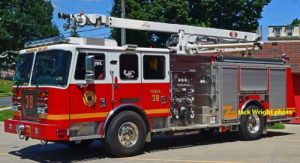
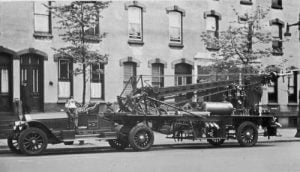
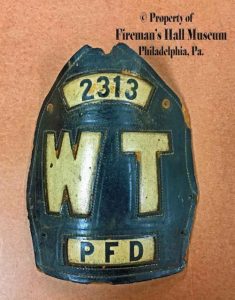
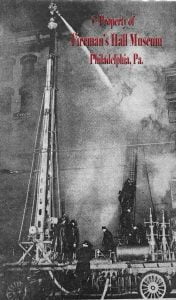
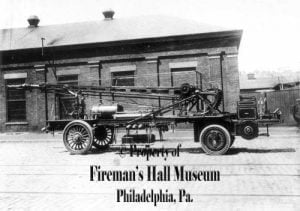

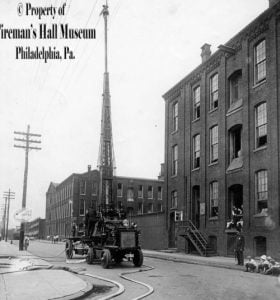
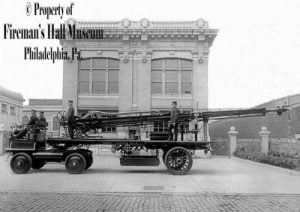
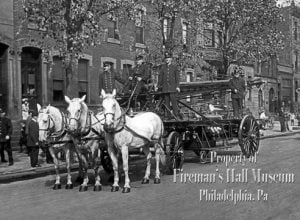
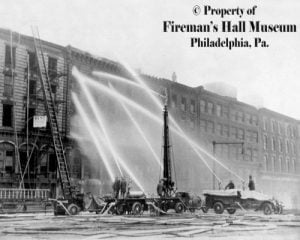
What’s the difference between a water tower and a SQURT?
A Squrt has a 54 foot articulating boom. The Water Towers have a 50 foot Snozzle.